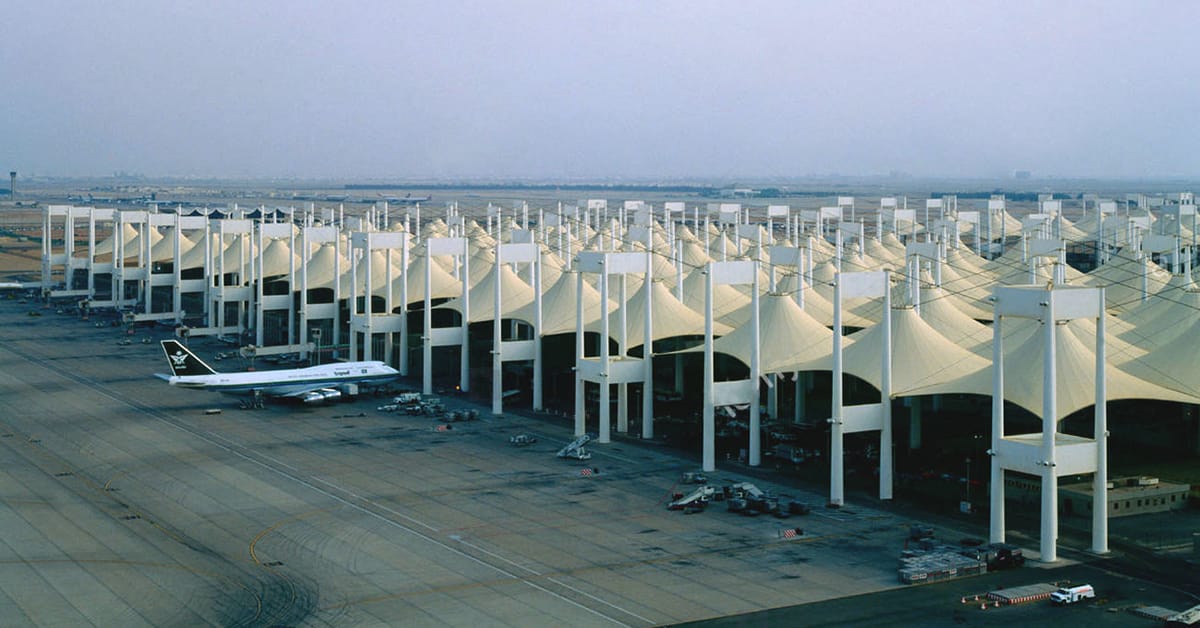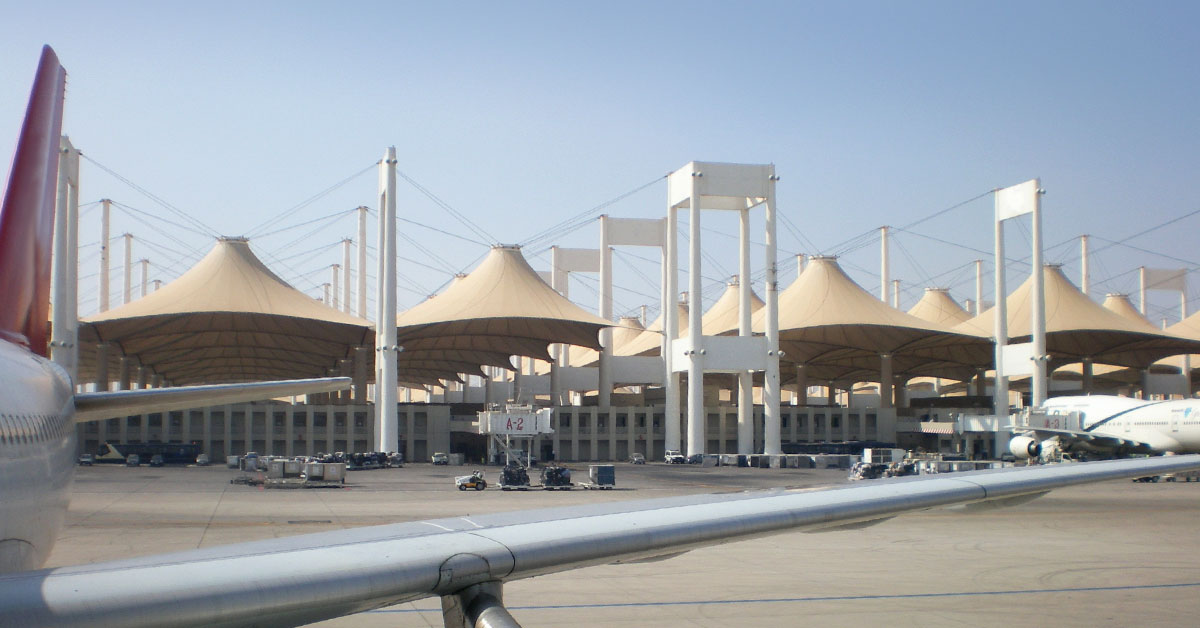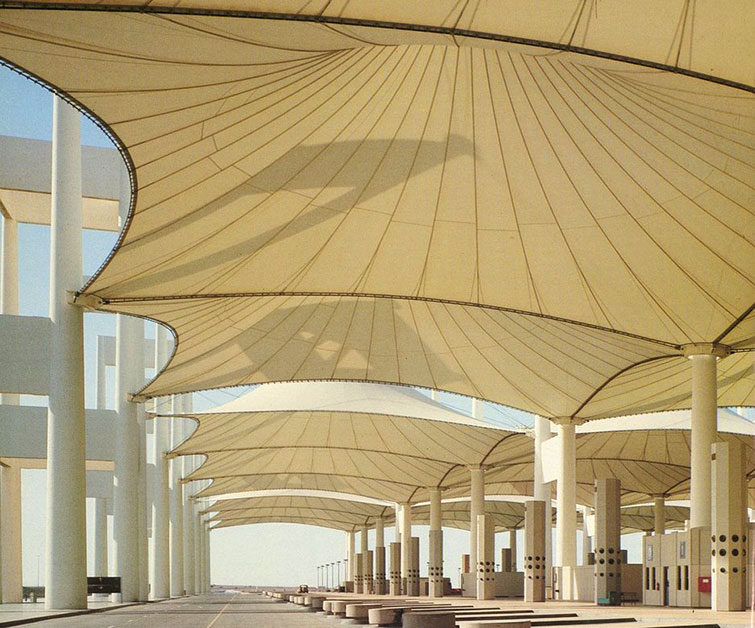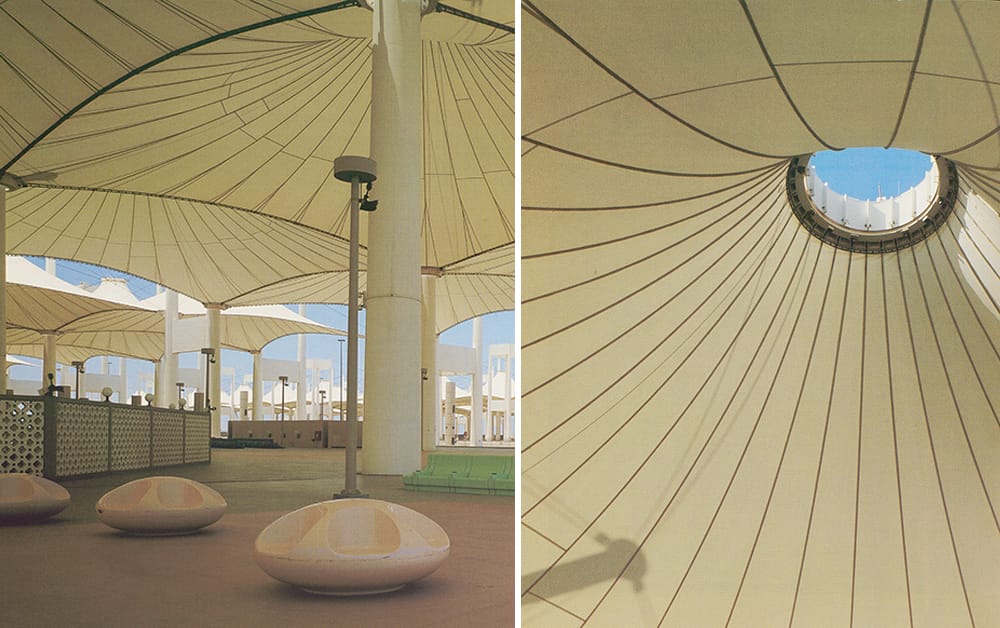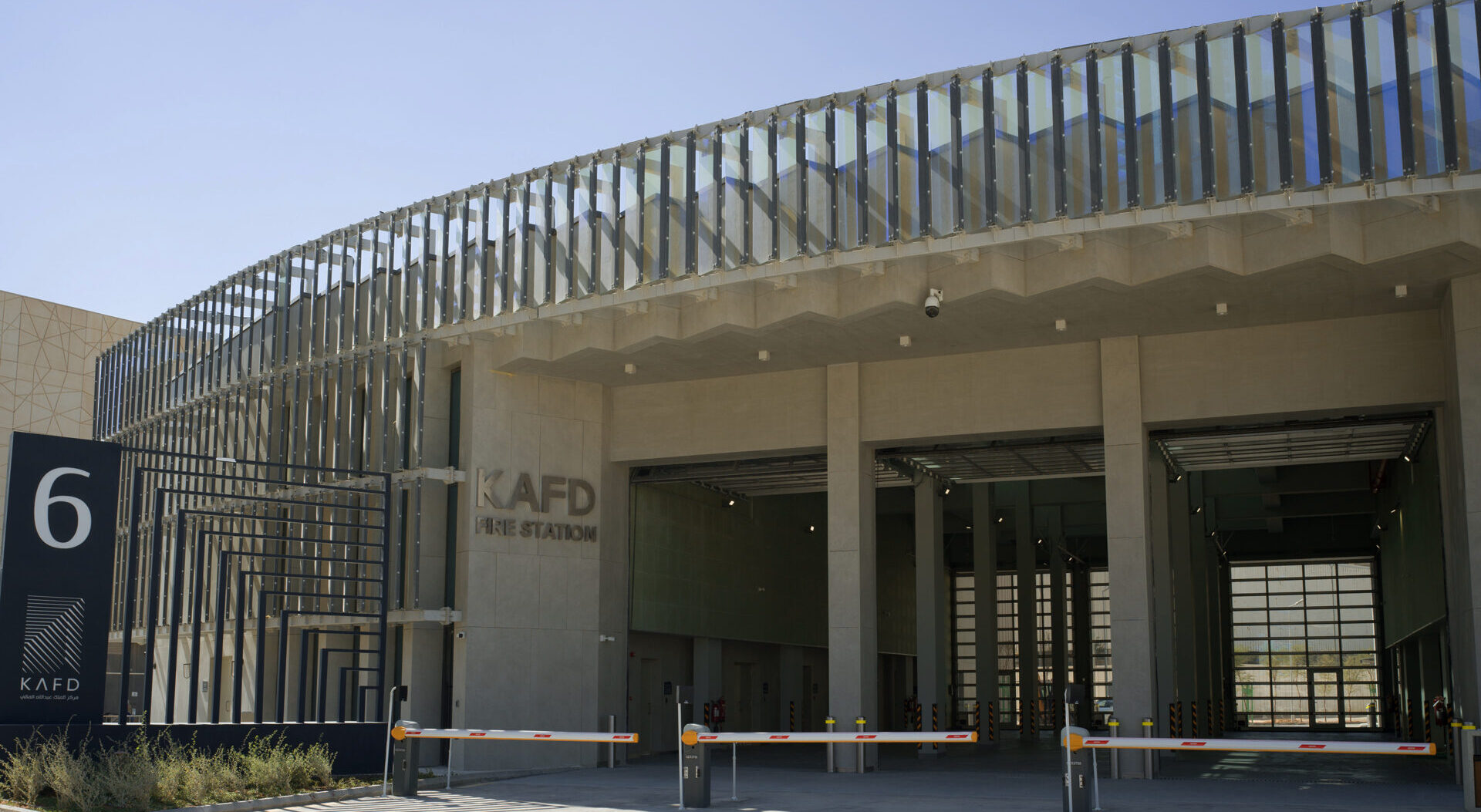 The Hajj Terminal Photo © Jay Langlois / SOM
The Hajj Terminal Photo © Jay Langlois / SOM
The cable-stayed, fabric-roofed structure of the Hajj Terminal at King Abdulaziz International Airport in Jeddah, Saudi Arabia covers 40.5 hectares, making it one of the largest airport terminals in the world and a case study in climate-specific design.
The open-air structure, completed in 1981 to designs by architect Gordon Bunshaft and engineer Fazlur Khan of Skidmore, Owings & Merrill (SOM), is capable of accommodating 50,000 pilgrims for up to 18 hours upon their arrival and as many as 80,000 pilgrims for up to 36 hours upon their departure. As a result of these large temporary populations, the architects conceived of the facility as a “shaded village” rather than as a building in the conventional sense. Only the immigration, customs, and baggage claim areas are fully enclosed and air-conditioned, while other areas are made habitable through various shading and passive cooling techniques.
Early iterations of the design for the immense waiting area investigated a lightweight concrete shell structure for the roof, but eventually Khan and Bunshaft decided on a modular cable-stayed, fabric-roofed structure as the “most appealing and practical solution.” Traditional Bedouin tents inspired this iconic roof structure, which is made up of two blocks of five modules each flanking a central landscaped area where pilgrims load onto and off of buses.
Each of the ten modules consists of 21 contiguous square “tent” canopies that measure 45 meters on each side and are supported on tapering masts that rise 45 meters high. The Teflon-coated fiberglass fabric chosen for the roof reflects 76% of solar radiation, allowing the open-air structure to remain at a comfortable 27 degrees Celsius while outside temperatures reach as high as 55 degrees Celsius. The fabric also allows 7% of the sunlight to pass through — just enough to eliminate the need for electric lighting during the day.
When the Hajj Terminal received the Aga Khan Award for Architecture in 1983, the jury stated that “the brilliant and imaginative design of the roofing system met the awesome challenge of covering this vast space with incomparable elegance and beauty.” The American Institute of Architects bestowed the Twenty-Five Year Award to the building in 2010, serving as testament to the lasting impact of the innovative structural and environmental solutions of the Hajj Terminal at King Abdulaziz Airport.








